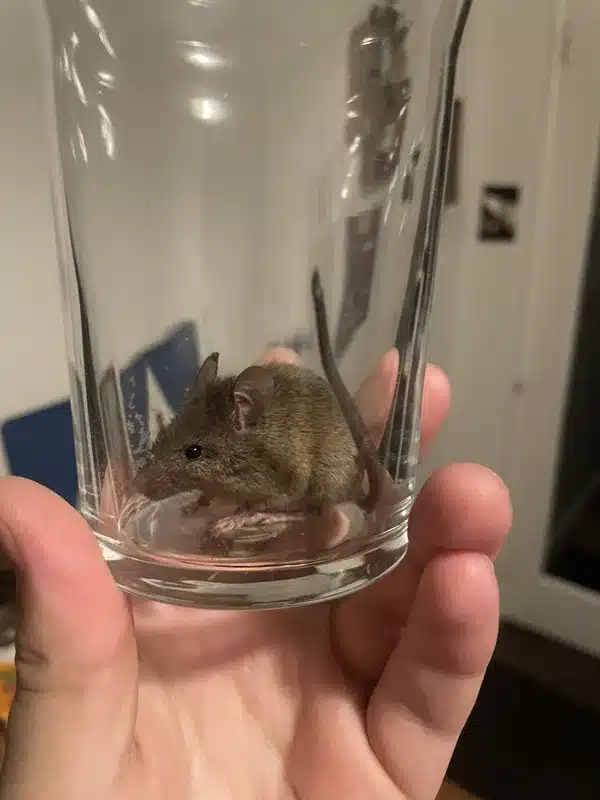If you’ve spotted a small rodent in your home, you might be wondering whether you’re dealing with a house mouse or a field mouse. This distinction matters more than you might think. After working as a licensed technician in the DC metro area since 2015, I’ve seen countless homeowners struggle with proper identification. The type of mouse determines everything from health risks to control strategies.
Field mice carry different diseases than house mice, including hantavirus, which changes how you should handle cleanup. Additionally, these two species have completely different habits and preferences. Getting the identification wrong can lead to expensive, unnecessary treatments or missed health precautions.
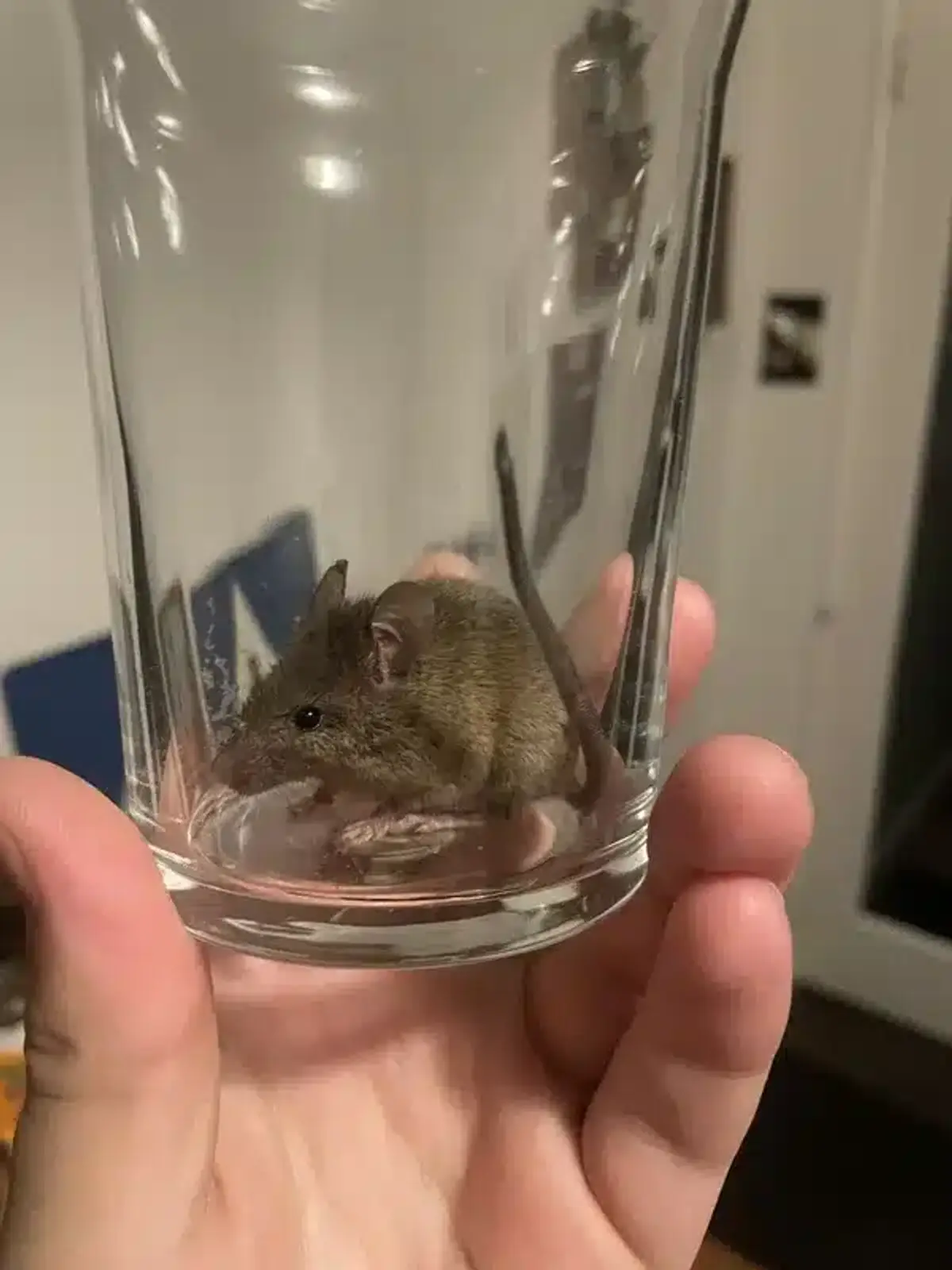
Quick Visual Identification: House Mouse vs Field Mouse
The fastest way to tell a house mouse vs field mouse apart is by looking at their tail and coloring. This simple check can save you time and help you understand what you’re dealing with.
House mice have uniform grayish-brown fur from top to bottom. Their tails are nearly hairless and the same color throughout. Field mice (also called deer mice) have a sharp color contrast - brown on top with bright white bellies and feet.


Physical Differences at a Glance
| Feature | House Mouse | Field Mouse |
|---|---|---|
| Fur Coloring | Uniform grayish-brown | Brown top, white belly |
| Tail Color | Solid color throughout | Bicolored (dark top, white bottom) |
| Ears & Eyes | Proportionally smaller | Notably larger |
| Body Length | 3-4 inches | 3-4 inches |
| Tail Length | Equal to body length | Typically shorter |
Beyond coloring, several physical features help distinguish these species. Field mice have notably larger ears and eyes compared to their body size, giving them an almost “cute” woodland appearance.
Where You’ll Find Each Species: Mouse Habitat Preferences
Location tells you a lot about which type of mouse you’re dealing with. In my experience serving areas like Old Town Alexandria and DC, understanding habitat preferences is crucial for effective control.
House Mouse Habitat Preferences
House mice are indoor specialists that live year-round inside heated buildings. They nest behind appliances, in wall voids, and near heat sources like water heaters or furnaces. These mice rarely survive outdoors in our Virginia and Maryland climate without access to buildings.
I’ve found house mice in kitchens, basements, and even upper floors of apartment buildings. They prefer areas within 10-30 feet of food sources and establish territories around cluttered spaces that provide cover.
Field Mouse Habitat Preferences
Field mice are primarily outdoor rodents that prefer edge habitats - areas where woods meet fields, brush piles, and overgrown fencerows. They’re native to North America and thrive in natural woodland settings.
These mice become seasonal invaders when temperatures drop below 50°F. They’ll slip into garages, sheds, cabins, and crawl spaces, especially in homes near wooded areas. However, they rarely establish permanent colonies in heated indoor spaces like apartments.
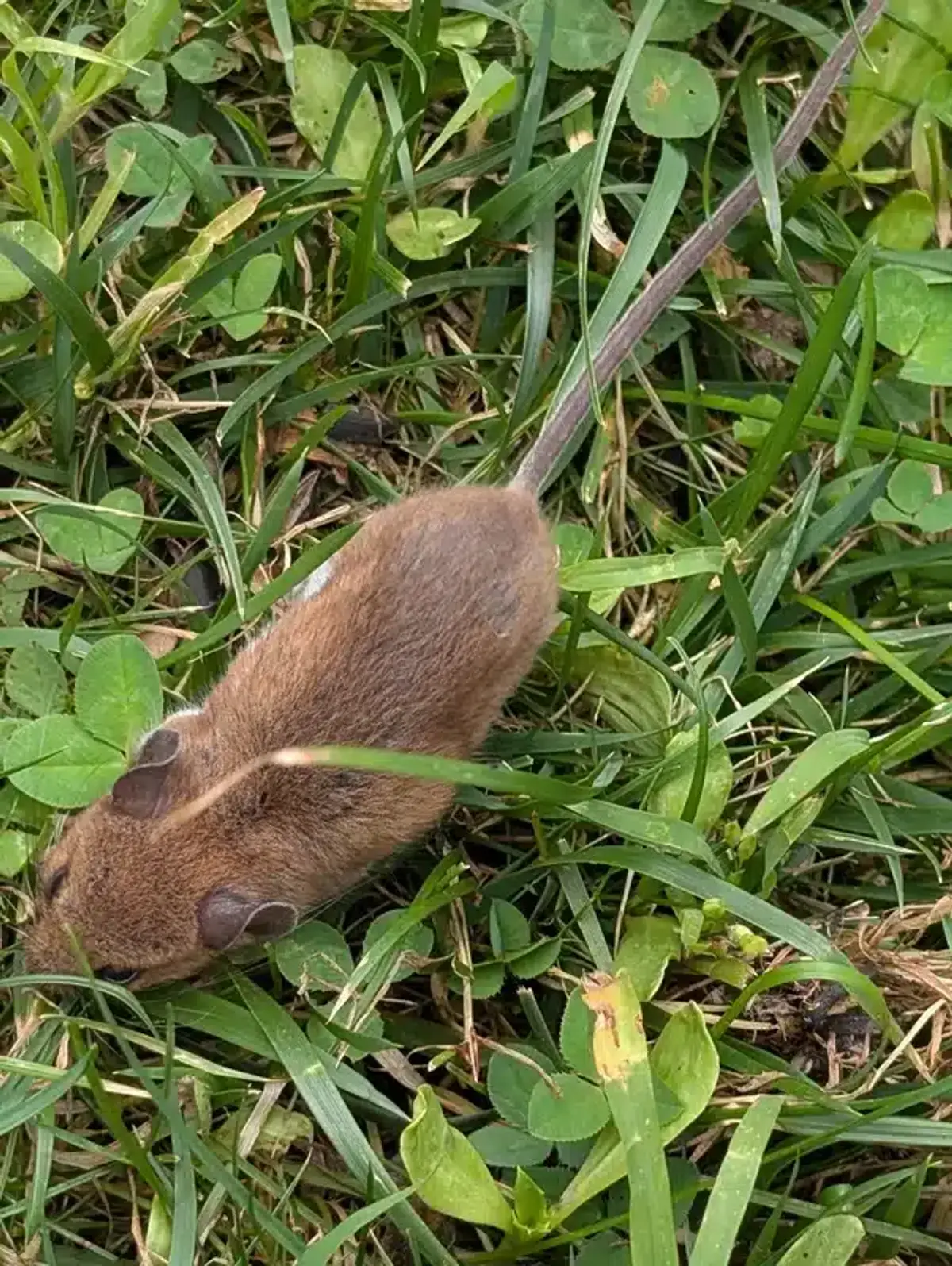
Behavioral Differences Between House and Field Mice
Understanding behavior helps predict where to look for these rodents and how to control them effectively. After thousands of service calls, I’ve noticed distinct patterns for each species.
Feeding and Foraging Habits
House mice are grazers that take dozens of small meals throughout the night. They’ll sample almost any human food, pet food, and even non-food items like soap or glue. These mice rarely store food, preferring to eat as they find it.
Field mice have more seasonal feeding patterns. They eat insects in winter, seeds in spring and fall, and fruits during summer. Most importantly, they cache food - storing seeds and nuts in hidden locations, sometimes bringing these caches indoors.
Nesting Behaviors
House mice build loose, 4-6 inch balls of shredded material. They’ll use paper, insulation, fabric, or any soft material they can find. These nests are typically located close to heat sources and food.
Field mice create more structured nests lined with fur and feathers. They prefer natural locations like hollow logs or shallow burrows. During winter, several field mice may share a single nest and even enter short periods of torpor to conserve energy.
Health Risks: Why Mouse Identification Matters
The biggest reason to correctly identify a house mouse vs field mouse is health risk assessment. These species carry different diseases that require different precautions.
Field Mouse Disease Risks
Critical Health Warning
Field mice are the primary reservoir for hantavirus in North America. The CDC reports that hantavirus pulmonary syndrome has a case-fatality rate of approximately 36%. This makes proper identification and cleanup protocols absolutely essential for your safety.
Field mice are the primary reservoir for hantavirus in North America. The virus spreads through airborne particles from dried urine, droppings, or saliva.
What does the science say?
According to the CDC’s comprehensive hantavirus surveillance data, hantavirus pulmonary syndrome has a case-fatality rate of approximately 36%. The Centers for Disease Control emphasizes that deer mice (field mice) are the primary reservoir host in North America, with the virus remaining viable in dried rodent excreta for extended periods.
CDC research demonstrates that hantavirus transmission occurs primarily through inhalation of aerosolized virus particles when contaminated materials are disturbed. The agency’s protocols specifically recommend avoiding activities that create dust or aerosols, including sweeping, vacuuming, or using compressed air in areas with rodent contamination.
If you’re dealing with field mice, you need to take special precautions during cleanup. This includes wearing respirators, avoiding sweeping or vacuuming, and using bleach solutions to wet down contaminated areas before cleaning.
House Mouse Disease Risks
House mice don’t carry hantavirus, but they present other health concerns. They can transmit salmonellosis and leptospirosis through contamination of food and surfaces. Additionally, house mouse allergens can trigger asthma, especially in children.
House mice also produce a distinctive musky odor from their territory-marking behavior. This smell, along with their continuous urination, creates sanitation issues that field mice typically don’t cause.
Identifying Mouse Droppings and Pest Signs
Sometimes you’ll find evidence before you see the actual mouse. Both species leave similar droppings, but context clues help with identification.
Both house mice and field mice produce rod-shaped droppings with pointed ends, measuring about 1/8 to 1/4 inch long. Field mouse droppings tend toward the larger end of this range and are often found near food caches.
House mice leave additional signs that field mice rarely produce: grease marks along walls from their oily fur, strong musky odors, and continuous small droplets of urine along their travel routes.
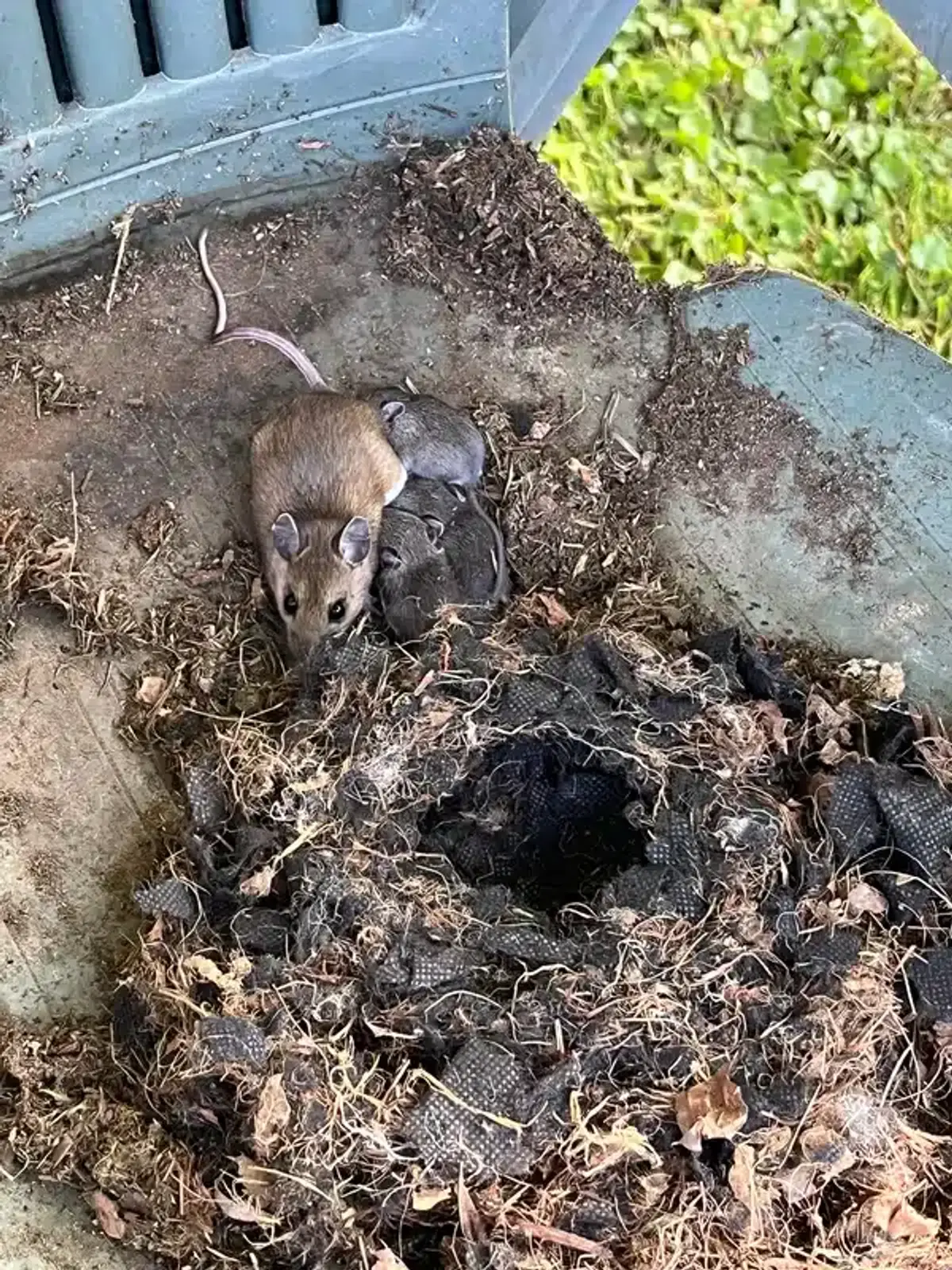
Seasonal Mouse vs Field Mouse Invasion Patterns in the DC Metro Area
Living in Virginia, Maryland, and DC means dealing with predictable seasonal patterns for both species. Understanding these cycles helps with prevention timing.
Fall and early winter bring peak invasion periods for both house mouse vs field mouse species. When nighttime temperatures drop below 50°F, both species seek warmer shelter. However, their behavior differs once inside.
House mice quickly establish permanent indoor territories and breed year-round in heated spaces. Field mice tend to use indoor spaces as temporary winter shelter, often becoming inactive during severe cold snaps.
Pest Control Prevention Strategies for House Mice vs Field Mice
Effective prevention requires different approaches based on which species you’re targeting. Our comprehensive rodent control guide covers these methods in detail.
Universal Prevention Methods
Essential Mouse Prevention Steps
- Seal Entry Points: Use steel or copper mesh to seal gaps larger than 1/4 inch around foundations, pipes, and utility lines
- Door Protection: Install tight-fitting door sweeps and weather stripping on all exterior doors
- Vent Security: Screen all attic and crawl space vents with hardware cloth to prevent rodent entry
- Food Storage: Store all food items in rodent-proof containers with tight-fitting lids
- Sanitation: Keep areas clean and remove potential nesting materials like cardboard and paper
Both species require the same basic exclusion measures. Seal any gaps larger than 1/4 inch using steel or copper mesh, install tight-fitting door sweeps, and screen attic and crawl space vents.
Store food in rodent-proof containers and maintain clean environments. Both species can squeeze through surprisingly small openings, so thorough exclusion is essential.
House Mouse-Specific Prevention
Focus on interior sanitation for house mice. Eliminate food residue, remove trash nightly, and reduce clutter within 30 feet of food areas. These mice need continuous access to food and prefer cluttered environments for nesting.
Our mouse baiting guide explains effective trapping strategies for indoor populations. Multiple-catch stations work well for heavy house mouse infestations.
Field Mouse-Specific Prevention
Exterior habitat modification is key for field mice. Trim vegetation away from foundations, move wood and brush piles at least 100 feet from buildings when possible, and keep grass short around structures.
Inspect elevated entry points like rafters and utility penetrations, since field mice are excellent climbers. Our attic mice removal guide covers these elevated access points in detail.
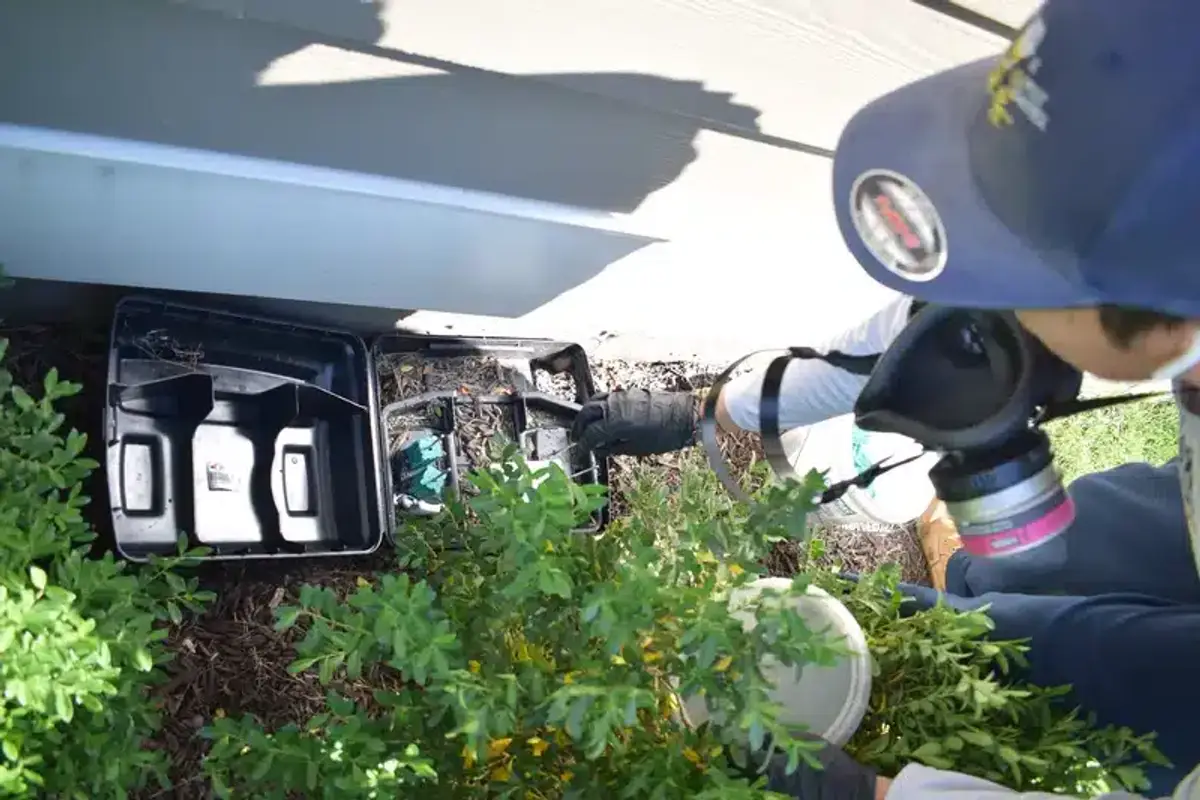
Professional Pest Control Treatment Approaches
When prevention isn’t enough, professional treatment strategies vary significantly between house mouse vs field mouse problems. Our four-step rodent protocol adapts to the specific species involved.
For house mice, we focus on interior bait stations and snap traps along walls at 6-10 foot intervals. Treatment emphasizes areas within their limited home range near food sources.
Field mouse treatment requires broader exterior strategies. We place tamper-resistant bait stations around the property perimeter and focus on seasonal access points. Because these mice maintain larger territories (up to 4 acres), exterior population control is essential.
Common Misidentification Problems
Case Study: When Misidentification Cost $3,000 in Unnecessary Work
A homeowner in Alexandria contacted us for a second opinion after being told they needed complete attic re-insulation due to a “massive mouse infestation” that would cost over $3,000.
- Initial diagnosis: Competitor claimed field mice had contaminated the entire attic space
- Recommended solution: Complete attic re-insulation and extensive exterior treatments
- Our findings: House mice in lower levels only - no attic contamination
- Actual solution: Targeted interior bait stations and entry point sealing
- Cost savings: Over $2,500 in unnecessary insulation work avoided
This case highlights why proper species identification is crucial - the wrong diagnosis can lead to expensive, unnecessary treatments that don’t address the actual problem.
I’ve seen homeowners and even some competitors make costly identification mistakes. Misidentification leads to wrong treatment approaches that waste both time and money.
Treating only interior areas fails for field mice because outdoor populations remain. Conversely, expensive yard-wide treatments may be unnecessary for house-mouse-only problems.
When to Call Professional Pest Control Help
Some situations require professional assessment, especially when health risks are involved. If you’re unsure about species identification or finding evidence in multiple areas, it’s time to call for help.
Field mice situations particularly warrant professional attention due to hantavirus risks. Proper cleanup protocols and prevention strategies require specialized knowledge and equipment.
Our registered technicians can quickly identify species, assess health risks, and implement targeted control strategies. We’ve developed protocols specifically for the DC metro area’s unique rodent challenges.
Whether you’re dealing with house mice or field mice, proper identification is the first step toward effective control. Don’t let misidentification lead to unnecessary treatments or missed health precautions. For expert assessment and treatment of any rodent issue, call us at 703-683-2000 or email info@bettertermite.com for a consultation with one of our licensed technicians.
Frequently Asked Questions
What's the fastest way to tell a house mouse vs field mouse apart?
+
Look at the tail and belly coloring. House mice have uniform gray-brown fur and solid-colored tails. Field mice have brown backs with bright white bellies and bicolored tails (dark on top, white underneath).
Are field mice more dangerous than house mice?
+
Yes, field mice carry hantavirus, which can cause potentially fatal hantavirus pulmonary syndrome. House mice don't carry hantavirus but can transmit other diseases like salmonellosis. Both require proper handling during cleanup.
Do house mice and field mice require different treatment methods?
+
Absolutely. House mice need interior-focused treatments since they live indoors year-round. Field mice require exterior habitat modification and seasonal access point control since they're primarily outdoor rodents that invade seasonally.
When do field mice typically enter homes in Virginia and Maryland?
+
Field mice become seasonal invaders during fall and early winter when nighttime temperatures drop below 50°F. Peak invasion periods occur from October through December as they seek warmer shelter.
Can field mice establish permanent indoor populations like house mice?
+
Field mice rarely establish permanent colonies in heated indoor spaces. They prefer to use buildings as temporary winter shelter and typically return outdoors when weather improves, unlike house mice which live indoors year-round.
How do the droppings differ between house mice and field mice?
+
Both produce similar rod-shaped droppings with pointed ends, but field mouse droppings tend to be slightly larger (toward 1/4 inch) and are often found near food caches. House mouse droppings are typically accompanied by musky odors and grease marks.
What special precautions are needed when cleaning up after field mice?
+
Field mice require hantavirus precautions: wear respirators, avoid sweeping or vacuuming, and use bleach solutions to wet down contaminated areas before cleaning. House mice don't require these specific respiratory protections.
Where are you most likely to find each species in a home?
+
House mice prefer heated indoor areas near food sources like kitchens and pantries. Field mice typically enter garages, sheds, attics, and crawl spaces, especially in homes near wooded areas, and rarely venture into main living spaces.
With five years of hands-on experience in the pest control industry, George Schulz is a registered technician with the Virginia Pest Management Association and a proud third-generation professional in a family business that's been protecting homes for over 57 years. He manages and trains a team of service pros while also leading internal research efforts—recently spearheading a deep-dive review of thousands of documents on pest control materials to hand-pick the most kid and pet friendly, most effective solutions tailored specifically for homes in the DC metro area.
